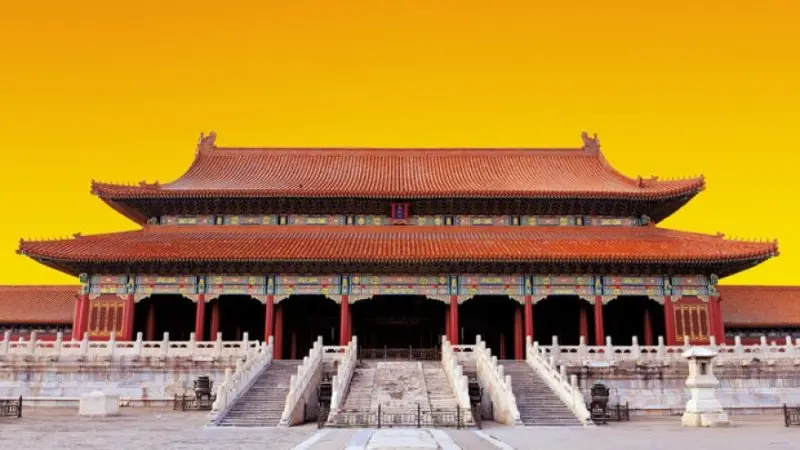History
The Forbidden City, located in the heart of Beijing, China, stands as a majestic testament to the country’s imperial past. With a history spanning over 600 years, it served as the imperial palace during the Ming and Qing dynasties, housing 24 emperors who ruled China.
Construction of the Forbidden City began in 1406 and was completed in 1420, under the reign of Emperor Yongle of the Ming Dynasty. It was designed to be the political and ceremonial center of the Chinese empire, serving as the residence of emperors and their households.
The Forbidden City acquired its name due to its restricted access. Only those with imperial authorization were allowed to enter its premises, hence creating an aura of mystery and intrigue. Today, the palace complex is a UNESCO World Heritage site and one of the most iconic cultural landmarks in China.
Why Visit
Visiting the Forbidden City offers a remarkable opportunity to immerse yourself in the grandeur, artistry, and historical significance of ancient China. Here are some compelling reasons to visit:
1. Cultural Heritage
The Forbidden City stands as a symbol of China’s rich cultural heritage. It provides a unique glimpse into the opulent lifestyle and intricate rituals of the imperial court, showcasing the profound influence of Chinese civilization.
2. Architectural Splendor
The palace complex is renowned for its architectural brilliance. From its imposing red walls and golden rooftops to the ornate gates and exquisite palaces, every detail reflects the meticulous craftsmanship and grandiose aesthetic of ancient Chinese architecture.
3. Historical Significance
Exploring the Forbidden City allows you to trace the footsteps of emperors and witness the historical events that shaped China’s dynastic eras. It is an immersive experience that brings history to life, offering a deeper understanding of the country’s past.
4. Art and Treasures
The palace complex houses a vast collection of artworks, artifacts, and imperial treasures. From rare ceramics and exquisite jade carvings to ancient calligraphy and imperial robes, these treasures provide insights into China’s artistic heritage and the imperial court’s patronage of the arts.
Location and Route
The Forbidden City is centrally located in Beijing, China’s capital city. It is situated at the northern end of Tiananmen Square, which serves as the entrance to the palace complex.
Reaching the Forbidden City is convenient, and various transportation options are available:
- Metro: Beijing’s efficient metro system offers direct access to the Forbidden City. The Tiananmen East Station (Line 1) and Tiananmen West Station (Line 1) are the nearest metro stations to the palace complex.
- Bus: Numerous bus routes operate in the vicinity of the Forbidden City, making it easily accessible from different parts of Beijing. Bus stops are conveniently located near the entrance.
- Taxi: Taxis are readily available throughout the city, and you can easily hail one to reach the Forbidden City. Ensure you have the name and address written in Chinese characters to communicate with the driver effectively.
When to Visit
The Forbidden City can be visited year-round, but the best time to visit depends on your preferences and the type of experience you seek. Here are some considerations:
- Spring (April to May) and Autumn (September to October): These seasons offer mild temperatures and pleasant weather, making it comfortable to explore the palace complex. The cherry blossoms in spring and the colorful foliage in autumn add to the charm.
- Summer (June to August): Beijing summers can be hot and humid, so be prepared for high temperatures if you visit during this time. However, summer also brings longer daylight hours, allowing for extended exploration of the palace complex.
- Winter (December to February): Winter in Beijing can be cold, with temperatures dropping below freezing. However, visiting during this time offers the advantage of fewer crowds, providing a more tranquil and immersive experience.
What to See
The Forbidden City is an expansive palace complex with numerous halls, courtyards, and gardens. Here are some highlights of what to see when visiting:
1. Gate of Heavenly Purity (Qianqingmen)
This imposing gate serves as the main entrance to the Forbidden City. Passing through it leads you to the magnificent Inner Court, where the emperor resided.
2. Hall of Supreme Harmony (Taihe Dian)
The largest and most important hall in the Forbidden City, it was used for grand ceremonies and official events. Its grandeur and architectural splendor are truly awe-inspiring.
3. Hall of Mental Cultivation (Yangxin Dian)
This hall served as the residence of emperors during the Qing Dynasty. It provides a glimpse into the private life and daily routines of the imperial family.
4. Imperial Garden
A serene and meticulously designed garden, it offers a tranquil escape within the bustling palace complex. Explore its pavilions, rockeries, and lush greenery, all carefully arranged to create a harmonious landscape.
5. Treasure Gallery
Located within the Palace of Tranquil Longevity (Ningshou Gong), the Treasure Gallery showcases a selection of the Forbidden City’s precious artifacts. Marvel at the exquisite jewelry, imperial robes, and precious gems on display.
6. Palace Museum
Housed within the Forbidden City, the Palace Museum features a vast collection of cultural artifacts, including ceramics, paintings, and calligraphy. It offers a comprehensive exploration of China’s imperial history and artistry.
In conclusion, a visit to the Forbidden City is a journey through China’s imperial past, a chance to marvel at the architectural splendor and immerse yourself in the cultural heritage of the country.
It is an experience that transports you to a bygone era, allowing you to witness the grandeur of the imperial court and appreciate the artistic and historical treasures within its walls.
Explore its majestic halls, stroll through its serene gardens, and let the Forbidden City ignite your imagination and fascination with ancient China.
